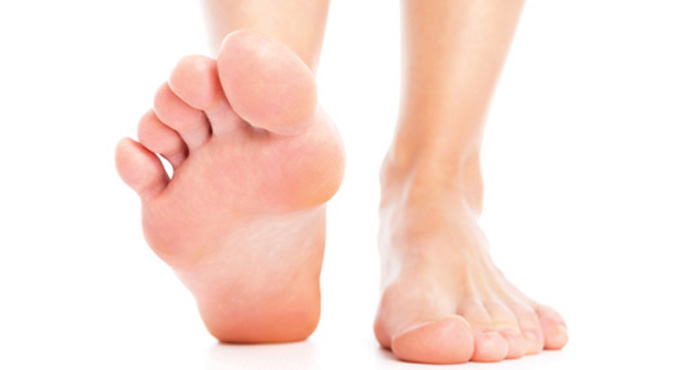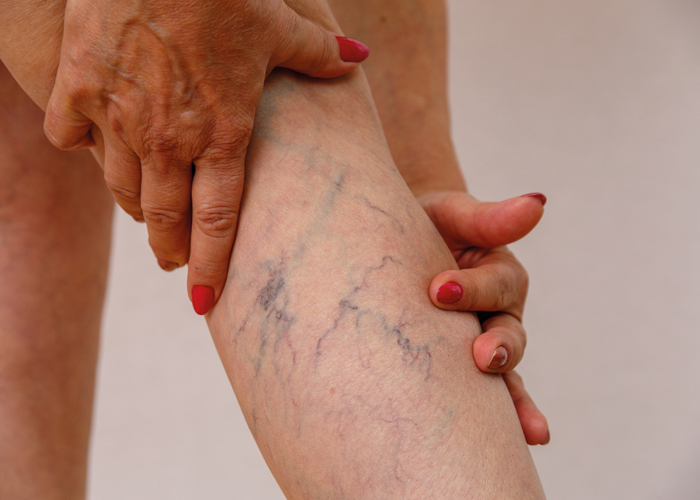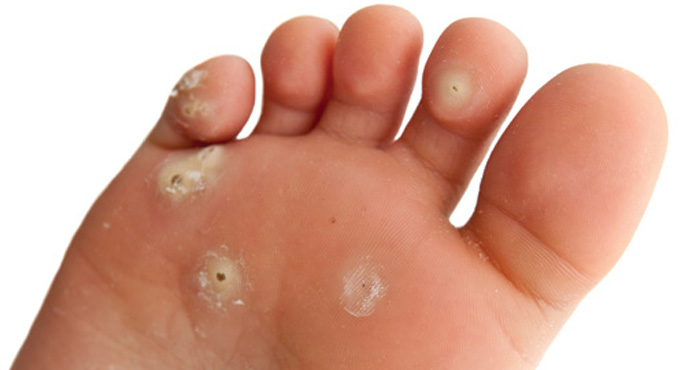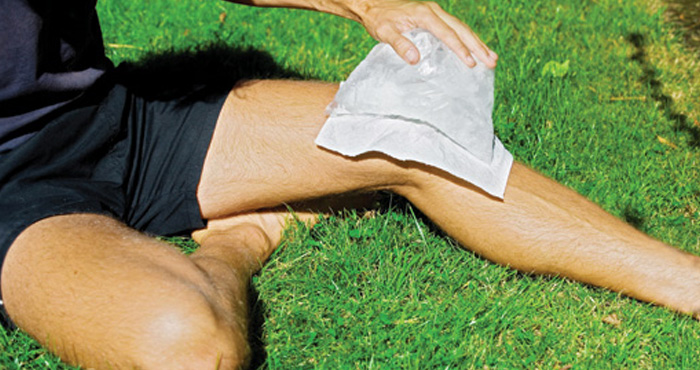Step by step
In OTC
Follow this topic
Bookmark
Record learning outcomes
People often take their feet for granted, but being known as the place to go for help when things go wrong is a great way to increase footfall in your pharmacy...

Learning objectives
After reading this feature you should be able to:
- Advise customers on preventing and treating common foot problems
- Answer any common questions customers may ask about their feet and legs
- Recognise risk factors for foot and leg conditions
Q: A teenage boy has come into the pharmacy complaining about his sweaty feet. What reassurance and recommendations can you provide?
A: The feet contain a greater concentration of sweat glands per inch than anywhere else on the human body. These glands often become overactive in adolescence, triggered by fluctuating hormone levels during puberty. In addition to excess sweating, feet may take on a wet, whitish appearance and generate an unpleasant odour as bacteria on the skin break down the sweat. The risk of other foot conditions such as athlete’s foot and blisters may also be increased.
Following a simple daily foot care regimen is key to managing sweaty feet: wash feet every day with antibacterial soap and dry thoroughly, apply absorbent foot powder, rotate footwear and change socks during the day. Wearing moisture-absorbing socks and well-fitting shoes made of breathable material is advisable and detachable deodorising insoles can also be recommended.
Iontophoresis, a technique which uses water to conduct a mild electrical current through the skin, has proved helpful in treating some cases of sweaty feet and machines can be purchased for use at home.
Q: One of your regular elderly customers has come to pick up her repeat prescription and mentions that her feet are very swollen. What exactly is oedema and how can it be alleviated?
A: Oedema occurs when fluid accumulates in the lower extremities causing swollen legs, ankles or feet and shiny, stretched, reddened skin. Oedema can have many potential causes but most commonly results from periods of inactivity, being overweight, excess salt consumption, poor circulation or pregnancy. Certain medications, notably antihypertensives, diuretics, oral contraceptives, antidepressants and steroids can also contribute to oedema.
Key self-care steps include raising the swollen leg, taking gentle exercise to boost blood flow, wearing comfortable, soft-soled footwear and practising good foot hygiene (as skin may be more prone to infection). Over the longer-term, losing weight and reducing salt intake can both help to combat oedema. Advise the customer to see her GP if the swelling does not improve within a few days or worsens as this may indicate a more serious underlying vascular problem (see the DVT Q&A later in the feature for red flag symptoms requiring immediate medical attention).
The feet contain a greater concentration of sweat glands per inch than anywhere else on the body
Q: A businesswoman requests a pharmacist consultation and takes off her shoe to reveal a bony lump at the base of the big toe joint. Is this a bunion and how can it be treated?
A: A bunion is a foot deformity where the big toe angles inwards excessively, forming a bony lump on the side of the foot. The skin over the lump may look hard, inflamed or swollen. Most bunions arise from genetically-driven defects in the mechanical structure of the foot but poorly fitting footwear can also be a key contributor. More than 15 per cent of UK women suffer from bunions.
This customer should be advised to wear wide-fitting shoes that properly accommodate the toes and keep heel height to a maximum of 4cm. She should also opt for shoes with straps over the instep and soft soles, and avoid backless footwear. Calf stretches can counteract shortening of the calf muscle and help to keep feet supple, while ice packs applied to the bunion can help relieve pain. Protective bunion pads can also be used.
A podiatrist may recommend orthoses or splints to relieve symptoms and slow progression, but the underlying deformity can only be treated by surgery where the bone forming the bunion is removed and the toe joint realigned.
Q: A keen jogger visits the pharmacy seeking help to manage his blisters ahead of an upcoming marathon. What advice can you give?
A: Blisters are small lesions filled with clear fluid that develop under an outer layer of skin. They are produced by pressure or friction on the foot, usually from poorly-fitting shoes, and are actually a protective mechanism employed by the body to shield damaged skin until it can recover.
A range of blister plasters and dressings are available which cover the blister and help it to heal. Hydrocolloid dressings in particular are proven to relieve pain and speed healing. Customers should resist the temptation to burst, peel or pick at blisters and avoid wearing the causative shoes until the blister has fully healed.
For regular sufferers of friction blisters, such as runners, key preventative advice includes wearing comfortable, well-fitting shoes, wearing thicker socks during exercise and dusting socks with talcum powder to absorb sweat. If the blister becomes red, hot to touch or filled with green or yellow pus, it may be infected and should be seen by a GP.
Customers should resist the temptation to burst, peel or pick at blisters
Q: Tired, achy legs affect us all occasionally but what steps can pharmacy teams recommend to relieve symptoms?
A: Tired, aching and heavy legs can be exacerbated by overweight/obesity, pregnancy or sedentary lifestyles. Conversely, symptoms can also be caused by over-exercising or standing for long periods of time. Tips that can help ease symptoms and promote blood flow to and from the legs include elevating the legs; wearing compression socks or stockings; reducing salt intake; stopping smoking; avoiding hot baths; losing weight; and staying active.
Restless leg syndrome is a specific complaint that produces a deep aching sensation in the legs, sometimes accompanied by an unpleasant crawling sensation. Intermittent claudication, a painful ache that develops when walking and resolves with rest, is an indicator of underlying peripheral arterial disease and requires further investigation.
Q: Varicose veins are unsightly and can cause distress and discomfort to sufferers, but are any OTC treatment options available?
A: Self-care is the first step in treating varicose veins and centres on using compression stockings for up to six months to help relieve pain, discomfort and swelling in the legs (customers may require a Doppler scan to check blood flow first). Pharmacy teams can offer advice on the level of compression (class 1 or 2 is usually recommended for varicose veins), colour, length and style of stocking that best suits a customer’s individual needs.
For maximum effectiveness, stockings should be worn all day and only taken off at bedtime. Emollients can be applied to keep the skin under the stockings moist. Regular exercise is also important in managing varicose veins, and sufferers should be advised to avoid standing for long periods and elevate the affected leg(s) when resting.

Q: Osteoporosis is often referred to as the ‘silent disease’ because it affects around 3 million people in the UK, yet many sufferers remain unaware they have the condition. What can pharmacy teams do to help mitigate and manage the impact of osteoporosis?
A: As with any chronic condition, pharmacists can help osteoporosis sufferers with medications management, self-care techniques and healthy living advice (particularly bone health). This should centre on consuming foods rich in calcium and vitamin D, with appropriate supplements as required, and doing regular weight-bearing exercise.
Patients recovering from a fragility fracture may need help with pain relief and healing. Pharmacy teams can suggest warm baths, cold packs or TENS machines, in addition to standard analgesic recommendations. Falls prevention is a key priority for patients with osteoporosis and should include regular sight and hearing tests plus removing any trip hazards from the home.
All customers can be encouraged to reduce their future risk of osteoporosis by undertaking regular weight-bearing exercise, stopping smoking and cutting down on alcohol consumption.
Q: A young boy has picked up a verruca at his school swimming lesson. His father wants to know how to treat it quickly.
A: A verruca is a plantar wart caused by the human papilloma virus (HPV) entering the skin through a cut or minor abrasion. Verrucas usually appear as flattened, discrete lesions on the underside of the foot and may contain tiny black spots. These are not the ‘root’ of the verruca as many people believe but actually small bleeding blood vessels within the wart itself.
Gels, creams, paints and medicated plasters to treat verrucae contain keratolytic agents, such as salicylic acid, silver nitrate and lactic acid, which break down the infected skin – but these can take up to 12 weeks to work so diligent application is required.
Cryotherapy treatments that ‘freeze’ the infected area may only require a single application and can clear the verruca within 10-14 days. Left untreated, it can take up to two years for the immune system to completely eradicate the HPV virus and the verruca to resolve.

Diabetes and foot problems
Customers with diabetes with foot problems require considered care. With the diabetes crisis in the UK showing no signs of receding (the number of sufferers are expected to rise to over 5 million by 2025), pharmacy must shoulder an increasing share of the long-term responsibility for managing these common diabetes-related complications.
In England in 2017 there were over 140 leg, foot or toe amputations a week among people with diabetics at a total cost to the NHS of around £1 billion. Four out of every five of these amputations was deemed preventable given that 80 per cent of cases were preceded by largely treatable foot ulcers. Even blisters and small wounds can pose a threat to patients with diabetes as reduced blood flow impairs healing and predisposes to infection. Pharmacists can play a key role in spotting potentially problematic foot and leg problems in diabetic patients and referring to a podiatrist or doctor where required.
Warning signs
Key symptoms to be aware of include any breaks in the skin; discharge; colour changes (red, blue, light/dark or mottled); or swelling. Diabetic customers with existing neuropathy, reduced circulation and poorly controlled blood glucose levels are at the highest risk of developing foot problems. However, all patients with diabetes should check their feet daily and be vigilant for changes in the shape or colour of the foot or any loss of sensation.
Other important steps include keeping feet clean; moisturising dry areas; wearing well-fitting footwear; avoiding walking barefoot; cutting or filing toenails regularly (keeping the shape straight across the top) and ensuring corns or hard skin are treated by a podiatrist.
Customers with diabetes should be encouraged to attend their annual foot review so any foot and leg problems can be caught as early as possible. Stopping smoking, exercising, reducing weight and maintaining good cholesterol levels and blood pressure can also help lower the risk of developing diabetic foot ulcers.
Q: A woman has returned from a recent skiing trip with several small, red swellings on her feet. These are proving painful and the customer is concerned about what the condition could be.
A: It is likely that this customer is suffering from chilblains – small, painful, red, itchy swellings on the toes caused by inflammation of the tiny blood vessels in the skin in an abnormal reaction to cold temperatures. They are most commonly caused by warming cold skin too rapidly – for example, placing feet directly on a radiator.
Chilblains typically heal on their own within two to three weeks but it is important to keep the affected area warm, dry and away from direct heat. Soothing creams and ointments are available OTC that may help relieve symptoms, and paracetamol or ibuprofen can be recommended for the pain. Smoking and caffeine should be avoided as both can adversely impact on blood flow to the extremities.
Q: A customer has come into the pharmacy for her regular purchase of corn plasters. She asks you to explain the difference between a corn and a callus, and how best to treat each specific ailment.
A: Both corns and calluses arise from friction, pressure or rubbing caused by ill-fitting shoes. Corns can be divided into two key types – soft corns found between the toes that are white and rubbery in texture, and hard corns, which are layers of dead skin that build up on the surface of the toes. The base of a hard corn rests on the skin surface while the tip pushes inwards, pressing on nerve endings in the foot and generating pain.
Calluses, in contrast, are much less defined than corns and typically produce a generalised burning sensation rather than localised pain. They are commonly found on the ball of the foot, outside of the big toe and the heel.
The cornerstone of treatment for both corns and calluses are products containing salicylic acid, which acts to remove layers of hard, dead skin. Files and pumice stones can also be recommended to slough off thickened skin on the affected areas of the foot.
Cushioning products such as plasters, foam cushions and pads can help relieve pressure on the corn/callus while it heals, reduce pain and prevent recurrence. Several of these products also contain salicylic acid as an active ingredient, providing relief and treatment combined in a single preparation.
Q: What key steps can pharmacy staff take to help manage minor sports injuries?
A: Sprains and strains are the most common sports injuries to the ankles, knees and legs that may present in pharmacy. A sprain involves injury to a ligament, while a strain describes an over-stretched or torn muscle. RICE therapy is a four-step plan at the centre of initial sprain/strain management:
Rest
Ice (applied to the injured area for about 20 minutes every two to three hours)
Compression (with a tubular support bandage)
Elevation.
OTC pain relievers can also be recommended. Sprains/strains usually respond well to topical analgesics, although ibuprofen should be avoided for the first 48 hours as it can impair healing. Rubefacients, heat therapy and cooling sprays can also be beneficial at different times and used with oral pain relief.

Q: Osteoarthritis is chronic disease that cannot cured, but what advice can pharmacy staff offer to help reduce the symptoms and impact of this painful condition?
A: Arthritis and rheumatism are associated with pain, soreness and stiffness in the joints, with the knees and hips most commonly affected in patients with osteoarthritis. Simple steps that can help manage mild symptoms include regular exercise, weight loss and use of appropriate footwear and assistive devices. Specialist insoles, leg braces, walking aids and splints may be particularly helpful for patients with osteoarthritis in the lower limbs.
Rubefacients are not recommended by NICE for osteoarthritis pain relief, although TENS machines and hot/cold packs can be beneficial in addition to standard oral/topical analgesic options. It is important to be aware of key NSAID contraindications given that customers affected by osteoarthritis are typically older (>50 years) and may have relevant comorbidities.
Q: What are the key signs and symptoms of a potential DVT that pharmacists and staff should be alert to?
A: A DVT is a blood clot that forms in a leg vein. This can cause serious complications and even prove fatal if a piece of the clot breaks off and travels to the lung (pulmonary embolism).
Symptoms of DVT include leg pain (often described as a heavy ache), swelling and tenderness, usually affecting the calf. The area of skin over the clot may also feel warm and look red.
Risk factors for DVT include family history, long periods of inactivity, pregnancy, hormone therapy (e.g. certain oral contraceptives/HRT), chemotherapy, and being overweight/obese.
Q: Fungal toenail infections can be notoriously time-consuming to treat, so what is the best advice to give sufferers?
A: Fungal toenail infections are easy to recognise with characteristic symptoms such as yellow/brown discolouration of the nail, the appearance of white ‘islands’ on the nail surface, and a rougher, more brittle appearance to the nail itself. Over time, the nail may start to crumble and detach from the nail bed.
The causative fungi may be transmitted directly from another person, spread from the foot (in the case of an existing athlete’s foot infection) or carried by carpets, socks or shoes. The mainstay of treatment is topical antifungal products – available in a range of formulations including solutions, creams and nail lacquers.
The unfortunate reality is that antifungal nail treatments can take up to a year to clear the infection and are not always effective. The best approach is to avoid fungal nail infections in the first instance by treating athlete’s foot as soon as it arises (to prevent spread to the nails), keeping feet clean and dry, wearing clean socks daily and using flip flops in communal changing areas.
